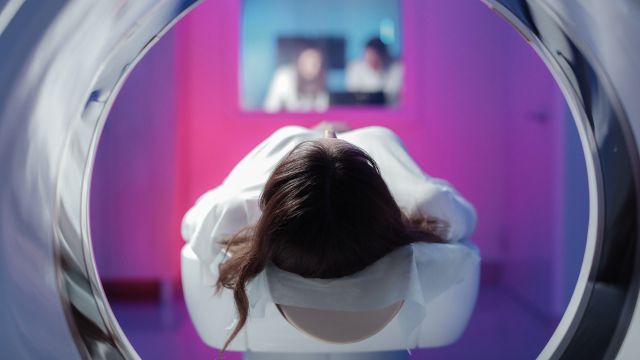Updated on April 4, 2024.
Lymphoma is a group of cancers that begin in the lymphatic system, which is part of the body's immune system that helps fight off infections and other diseases. Lymphoma is a common type of cancer. Non-Hodgkin’s lymphoma, the most common form of lymphoma, causes roughly 4 percent of all cancers diagnosed in the United States.
Enlarged lymph nodes are a common symptom of lymphoma. Lymph nodes filter germs and other substances that can harm the body, and store white blood cells (immune cells that help fight off illness) in clusters, or nodes, in the lymphatic system. They are located throughout the body, including in the neck, underarms and groin.
Swollen lymph nodes are a symptom of many illnesses, so if a person has swollen nodes, it does not necessarily mean they have cancer. Other symptoms of lymphoma can overlap with other medical conditions as well, which means it can be challenging to determine whether enlarged nodes are a sign of lymphoma, another form of cancer or a different illness altogether. The following are some tests that healthcare providers (HCPs) may use to make the correct diagnosis.
Clinical exam
During an exam, your HCP will check your lymph nodes for swelling and for signs of infection or injury. Your provider will also ask about what medical conditions or surgeries you've had in the past or currently have, ask about any other symptoms and order blood tests to check for substances in your blood that may indicate lymphoma, such as a low number of white blood cells.
Blood tests may also be used to identify certain lymphoma types and find out whether the cancer is in its early stages or is more advanced. Tests can also indicate how well your kidneys and liver are working, as well, and detect viruses that could have an effect on your treatment. There is no single blood test to diagnose lymphoma.
Imaging tests
Imaging tests take pictures of your body. A chest X-ray can reveal swollen lymph nodes. Your healthcare provider may order a computerized tomography scan (CT scan) which uses X-rays and a computer to take detailed pictures of your head, neck, chest, abdomen and pelvis. It can show the location of the cancer and if it has spread.
An ultrasound or a positron emission tomography scan (PET scan) are other options. Ultrasounds use sound waves to create images, while PET scans use radioactive sugar, which tends to collect in cancer cells. This highlights areas of cancer and may be able to help show whether an enlarged lymph node is cancer or not.
Magnetic resonance imaging (MRI) uses radio waves and strong magnets to take pictures of the inside of the body. MRI is done on occasion during the diagnosis of lymphoma, if your HCP needs to check whether the cancer has spread to the brain or spinal cord.
Biopsy
During a biopsy, your HCP will remove all or part of a lymph node to check for cancer cells. A biopsy can be used to confirm whether or not you have lymphoma. It is also used to diagnose the type of lymphoma. A similar test called bone marrow aspiration and biopsy removes small amounts of bone marrow (the spongy substance inside bones that makes blood cells), blood and bone with a needle.
After diagnosis
After lymphoma is confirmed, the next steps will be to learn more specific details about the cancer. Your HCP will need to know the stage (extent of the cancer), whether or not the cancer is fast-growing and likely to metastaize (spread to other areas of our body), and whether or not it has already metastasized. More testing can identify these details, and will be used to help find the best treatment plan for you.







